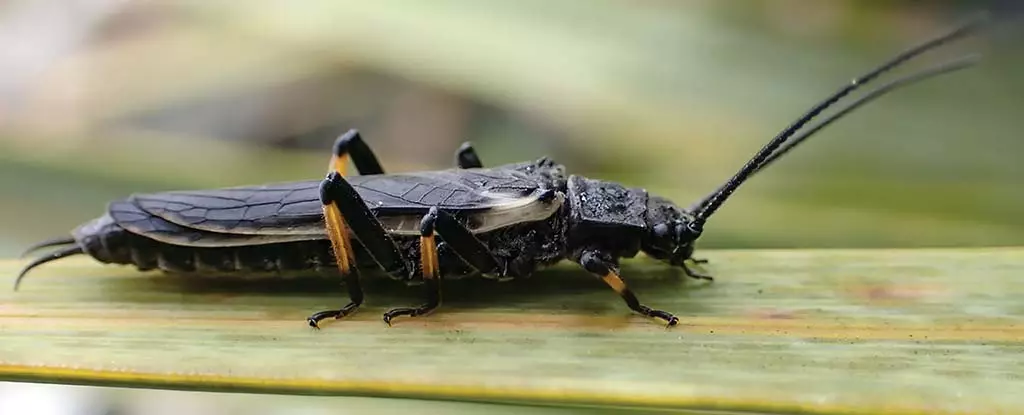In the rapidly changing ecosystem of New Zealand, researchers have uncovered a fascinating example of evolution driven by human activity. The long-tailed stonefly, scientifically classified as Zelandoperla, has undergone a striking transformation in response to significant deforestation. This shift in color and behavior serves as a vivid illustration of how species can rapidly evolve in the wake of dramatic environmental changes brought about by human influence. The adaptation showcases not only the resilience of the species but also the complex interplay between ecological factors and evolutionary responses.
Zelandoperla has historically employed a remarkable defense strategy by mimicking a toxic relative, the Austroperla stonefly. The latter is known for its ability to produce cyanide, effectively deterring potential predators. By adopting a similar appearance, Zelandoperla was able to blend into its surroundings while invoking a false sense of danger for its bird predators. This mimicry provided an effective shield against predation, allowing the long-tailed stonefly to thrive in forested regions rich with its toxic counterpart.
However, such strategies are profoundly influenced by environmental conditions. The extensive deforestation that has swept across southern New Zealand since the arrival of European settlers in the early 1800s has led to a decline in Austroperla populations. As their preferred habitats vanished, the long-tailed stoneflies faced a dilemma; the toxic model they once emulated was no longer present. Researchers from the University of Otago observed a corresponding drop in both Austroperla populations and the overall avian predator presence, which led to a significant shift in the stoneflies’ coloration. This transformation marks a critical adjustment in their survival strategy, indicating a departure from mimicry and a move towards a more distinct appearance.
To understand the mechanisms behind this evolutionary change, the research team employed a multifaceted approach. They conducted a combination of field observations and predation experiments alongside genetic mapping. Their findings revealed compelling insights: in environments where Zelandoperla coexisted with both predators and toxic Austroperla, the mimicry remained effective. Conversely, in deforested regions devoid of Austroperla, researchers noted a transition toward darker pigmentations in Zelandoperla, altering the previous patterns of selection.
In controlled predation experiments, the stark contrast in the survival rates of differently colored models demonstrated a heightened interest from birds in lighter-colored stoneflies within forested areas, while ebony-toned specimens fared better in deforested landscapes, suggesting that color adaptation has become a vital survival tactic for the long-tailed stonefly.
The study revealed a profound resilience among Zelandoperla populations, which exhibited a three-fold increase in individuals abandoning the mimicry strategy across varied deforested regions. As Graham McCulloch, a zoologist involved in the study, highlighted, these findings suggest that similar evolutionary pressures are leading to consistent adaptations across different geographic locations. The Zelandoperla species appears to be embodying the notion that evolution can indeed conform to predictable patterns when triggered by significant ecological changes.
The shift in Zelandoperla’s coloration in response to deforestation offers critical insights into the broader implications of human impact on ecosystems. It raises important questions about how species can adapt to rapidly changing environments and the potential consequences for ecological balance. While humans have the power to disrupt millennia-old ecological relationships, this phenomenon of rapid evolution suggests that nature possesses an equally formidable resilience. Such studies reinforce the urgency of preserving natural habitats and underscore the intricate connections within ecosystems. The long-tailed stonefly, albeit forced to evolve, illustrates the ongoing saga of life’s adaptability against the backdrop of human-induced challenges.

Leave a Reply